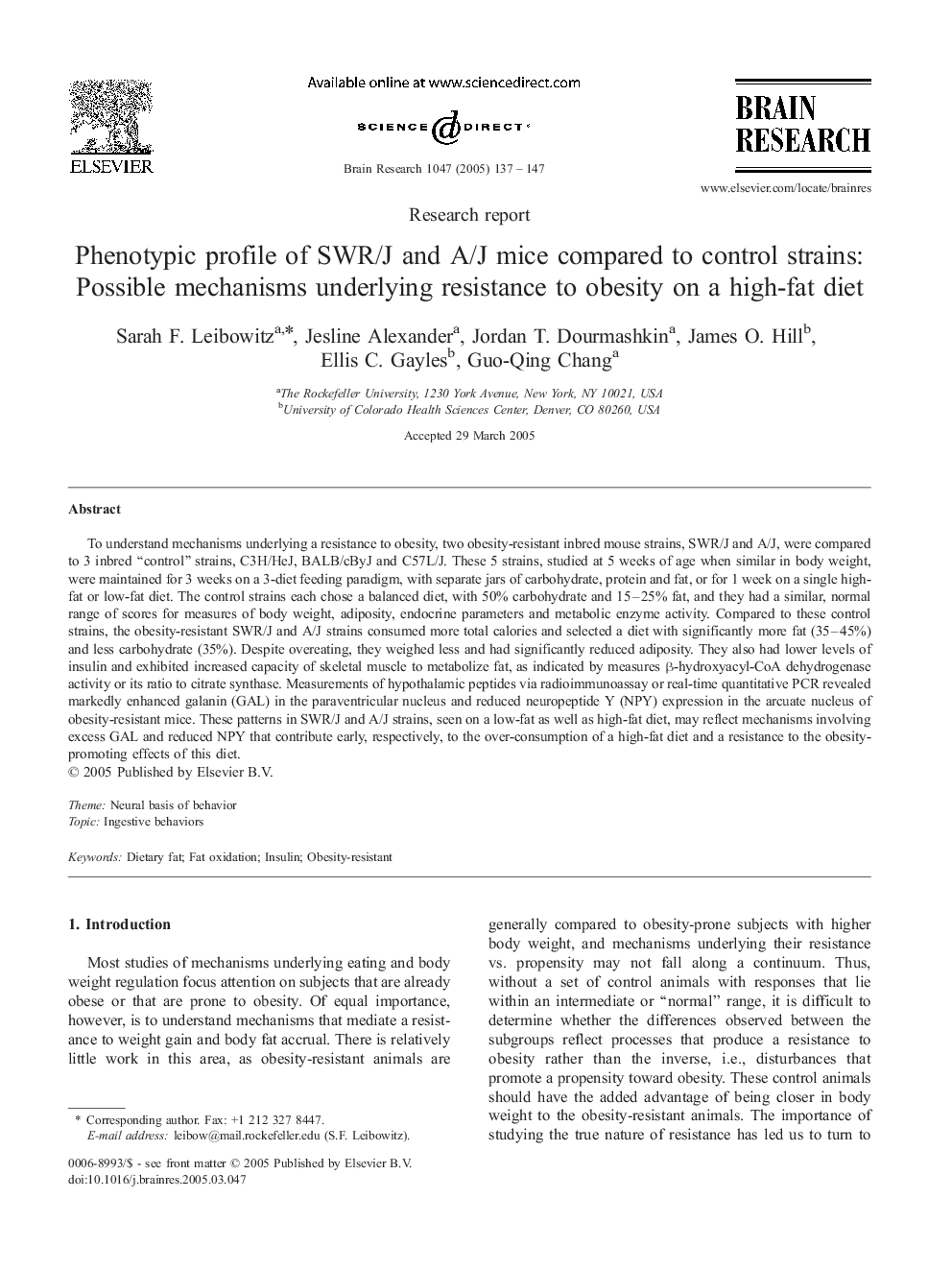| Article ID | Journal | Published Year | Pages | File Type |
|---|---|---|---|---|
| 9416172 | Brain Research | 2005 | 11 Pages |
Abstract
To understand mechanisms underlying a resistance to obesity, two obesity-resistant inbred mouse strains, SWR/J and A/J, were compared to 3 inbred “control” strains, C3H/HeJ, BALB/cByJ and C57L/J. These 5 strains, studied at 5 weeks of age when similar in body weight, were maintained for 3 weeks on a 3-diet feeding paradigm, with separate jars of carbohydrate, protein and fat, or for 1 week on a single high-fat or low-fat diet. The control strains each chose a balanced diet, with 50% carbohydrate and 15-25% fat, and they had a similar, normal range of scores for measures of body weight, adiposity, endocrine parameters and metabolic enzyme activity. Compared to these control strains, the obesity-resistant SWR/J and A/J strains consumed more total calories and selected a diet with significantly more fat (35-45%) and less carbohydrate (35%). Despite overeating, they weighed less and had significantly reduced adiposity. They also had lower levels of insulin and exhibited increased capacity of skeletal muscle to metabolize fat, as indicated by measures β-hydroxyacyl-CoA dehydrogenase activity or its ratio to citrate synthase. Measurements of hypothalamic peptides via radioimmunoassay or real-time quantitative PCR revealed markedly enhanced galanin (GAL) in the paraventricular nucleus and reduced neuropeptide Y (NPY) expression in the arcuate nucleus of obesity-resistant mice. These patterns in SWR/J and A/J strains, seen on a low-fat as well as high-fat diet, may reflect mechanisms involving excess GAL and reduced NPY that contribute early, respectively, to the over-consumption of a high-fat diet and a resistance to the obesity-promoting effects of this diet.
Keywords
Related Topics
Life Sciences
Neuroscience
Neuroscience (General)
Authors
Sarah F. Leibowitz, Jesline Alexander, Jordan T. Dourmashkin, James O. Hill, Ellis C. Gayles, Guo-Qing Chang,
